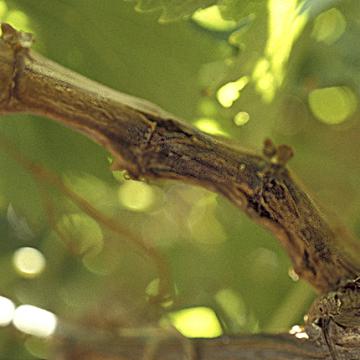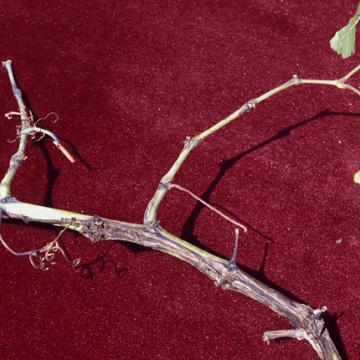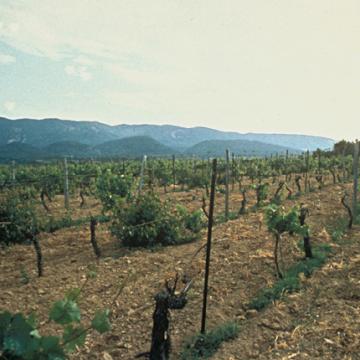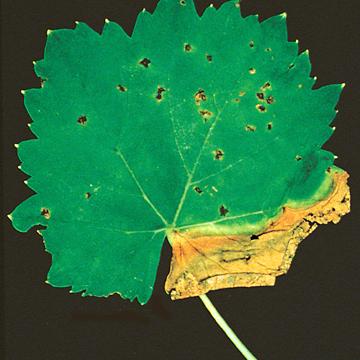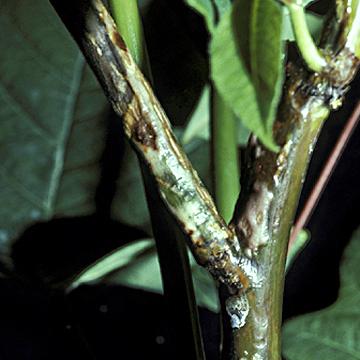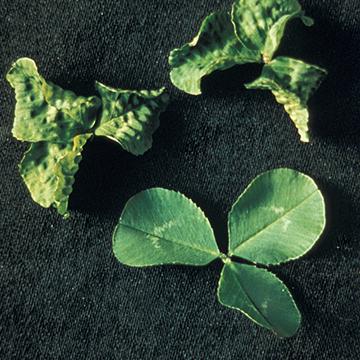DISEASE: Bacterial blight (Bacterial necrosis)
HOST: Grape
Stem necrosis of grape.
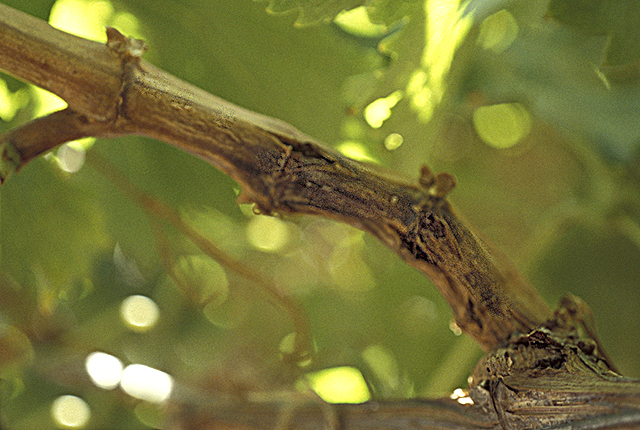
Bacterial blight (Bacterial necrosis) | Grape
DISEASE: Bacterial blight (Bacterial necrosis)
HOST: Grape (Vitis vinifera)
PATHOGEN: Xylophilus ampelinus
PATHOGEN SYNONYM: Xanthomonas ampelina
SOURCE: N. Schaad
DISEASE: Bacterial blight (Bacterial necrosis)
HOST: Grape
Stem with cankers and discolored external tissues.
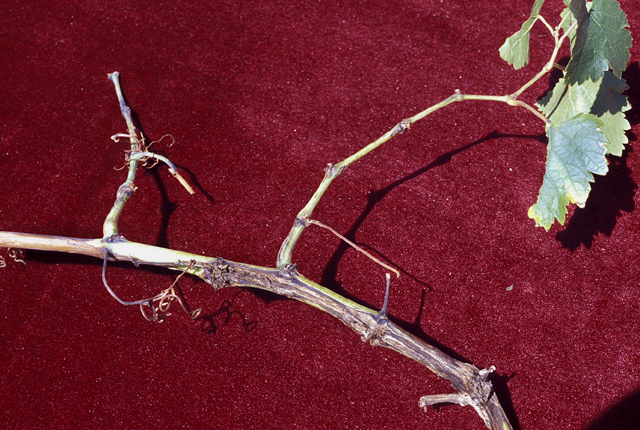
Bacterial blight (Bacterial necrosis) | Grape
DISEASE: Bacterial blight (Bacterial necrosis)
HOST: Grape (Vitis vinifera)
PATHOGEN: Xylophilus ampelinus
PATHOGEN SYNONYM: Xanthomonas ampelina
SOURCE: N. Schaad
DISEASE: Bacterial blight (Bacterial necrosis)
HOST: Grape
Severe infection in vineyard is noted by dead canes. Symptoms are most severe in spring; shoot blight, occasional spots on leaves, and cankers are common.
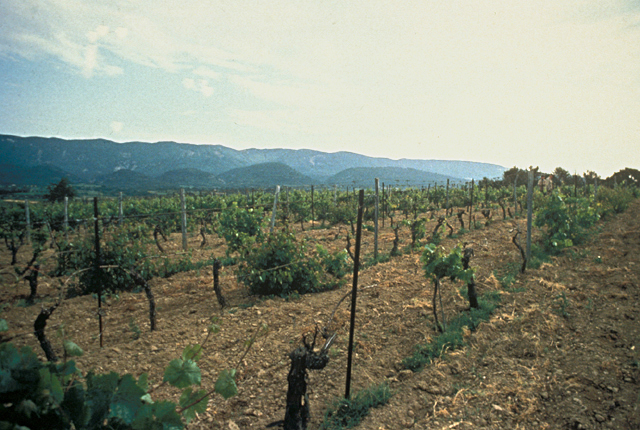
Bacterial blight (Bacterial necrosis) | Grape
DISEASE: Bacterial blight (Bacterial necrosis)
HOST: Grape (Vitis vinifera)
PATHOGEN: Xylophilus ampelinus
PATHOGEN SYNONYM: Xanthomonas ampelina
SOURCE: C. Manceau, N. Schaad
DISEASE: Bacterial blight (Bacterial necrosis)
HOST: Grape
Leaf with necrotic spots and marginal necrosis. One-sided cracking of petiole tissue is common (not shown here).
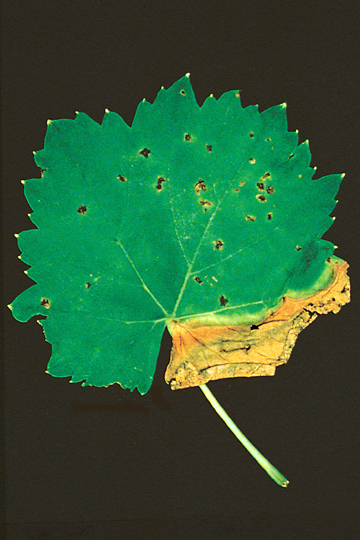
Bacterial blight (Bacterial necrosis) | Grape
DISEASE: Bacterial blight (Bacterial necrosis)
HOST: Grape (Vitis vinifera)
PATHOGEN: Xylophilus ampelinus
PATHOGEN SYNONYM: Xanthomonas ampelina
SOURCE: C. Panagopoulos
DISEASE: Greasy center
HOST: Poinsettia
Stem with dark cankers and copious ooze. Necrotic areas are greasy in appearance and eventually turn light tan to brown with a papery texture as the cuticle becomes detached.
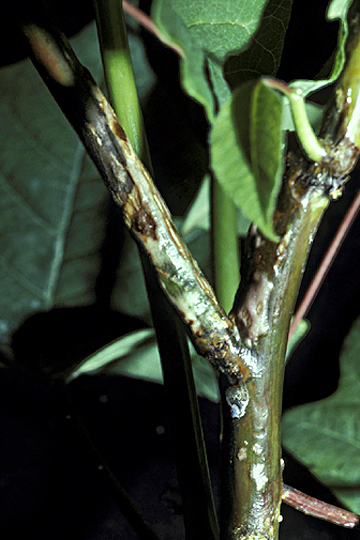
Greasy center | Poinsettia
DISEASE: Greasy center
HOST: Poinsettia (Euphorbia pulcherrima)
PATHOGEN: Pseudomonas viridiflava
SOURCE: R. Raabe
DISEASE: Rugose leaf curl
HOST: Clover
Two rugose, distorted white clover leaves and a healthy leaf. Rugose leaf curl is caused by an unidentified phloem-infecting bacterium.
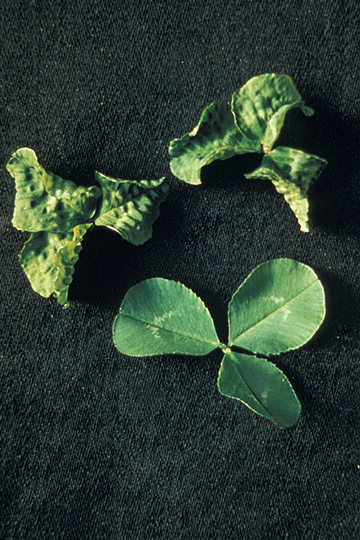
Rugose leaf curl | Clover
DISEASE: Rugose leaf curl
HOST: Clover (Trifolium repens)
PATHOGEN: Phloem-infecting bacterium
SOURCE: D. Teakle


